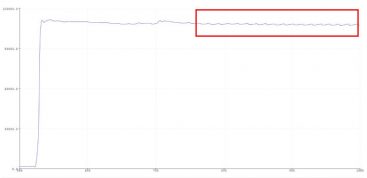

Used to preserve cookie consent answer for necessary cookies Used by CloudFlare service for rate limiting But opting out of some of these cookies may have an effect on your browsing experience. You also have the option to opt-out of these cookies. These cookies will be stored in your browser only with your consent. We also use third-party cookies that help us analyze and understand how you use this website. Out of these cookies, the cookies that are categorized as necessary are stored on your browser as they are essential for the working of basic functionalities of the website. This website uses cookies to improve your experience while you navigate through the website. Note that this sketch will also work with an Analog Protoboard Adapter since the Arduino itself has an onboard LED wired to digital line D13. For example, if you have a Vernier Dual-Range Force Sensor plugged into the Analog 1 port, the blue LED will light up if the applied force exceeds 5 newtons. The sample sketch, VernierLibTutorialAnalogThreshold, will take sensor readings every half second and turn on the blue LED if the reading exceeds a threshold value. To turn the LED on or off, use statements like:ĭigitalWrite(13, HIGH) //turns the LED onĭigitalWrite(13, LOW) //turns the LED off To access digital line 13 on the Arduino, you would put this statement in the setup portion of your sketch:

You can use this LED as an output device (for example, a threshold indicator) in your projects. We designed the Vernier Arduino Interface Shield to include a blue LED connected to digital line 13 on the Arduino. The Arduino contains a number of digital lines that can be used for controlling electronic devices, such as lights, buzzers, and motors. You can try out different sensors simply by plugging in a new sensor and pressing the Reset button. The sample sketch, VernierLibTutorialAnalogRead, will take sensor readings every half second and print the data with units to the Serial Monitor. To continuously read data from the sensor, you should put the function in the loop() portion of your sketch. The Vernier.readSensor() function will read one data point from the sensor connected to the Analog 1 port. You can access the Serial Monitor from the Tools menu.

The Serial Monitor is a popup window that allows you to see data sent to and from your Arduino.
#Adjust arduino serial plotter scale full
This statement will print the full name of the sensor on the Serial Monitor. To access information about the sensor, you would use a statement like:

calEquationType – the type of equation used for calibration.sensorUnits – a standard metric measurement.shortName – an abbreviated name often used for labeling columns in data tables.sensorName – the full name of the sensor found in the catalog.If a sensor is found in the Analog 1 port, it will read information about it, including: To collect data from a second sensor you will need to manually calibrate raw voltage readings as described in Reading Raw Voltage.) (Note the VernierLib library does not support sensors plugged into the Analog 2 port on the Vernier Arduino Interface Shield or a second Analog Protoboard Adapter. This function checks for a standard analog (BTA) sensor connected to the Analog 1 port on the Vernier Arduino Interface Shield or an Analog Protoboard Adapter wired to Arduino pin A0 as explained in the Connecting Vernier Sensors to the Arduino Using a Breadboard section. The toID() function is placed in the setup() portion of your sketch. You can automatically detect which sensor you are using and read a data point with just two simple commands. One of the best features about Vernier sensors is that they have a built-in autoID capability.


 0 kommentar(er)
0 kommentar(er)
